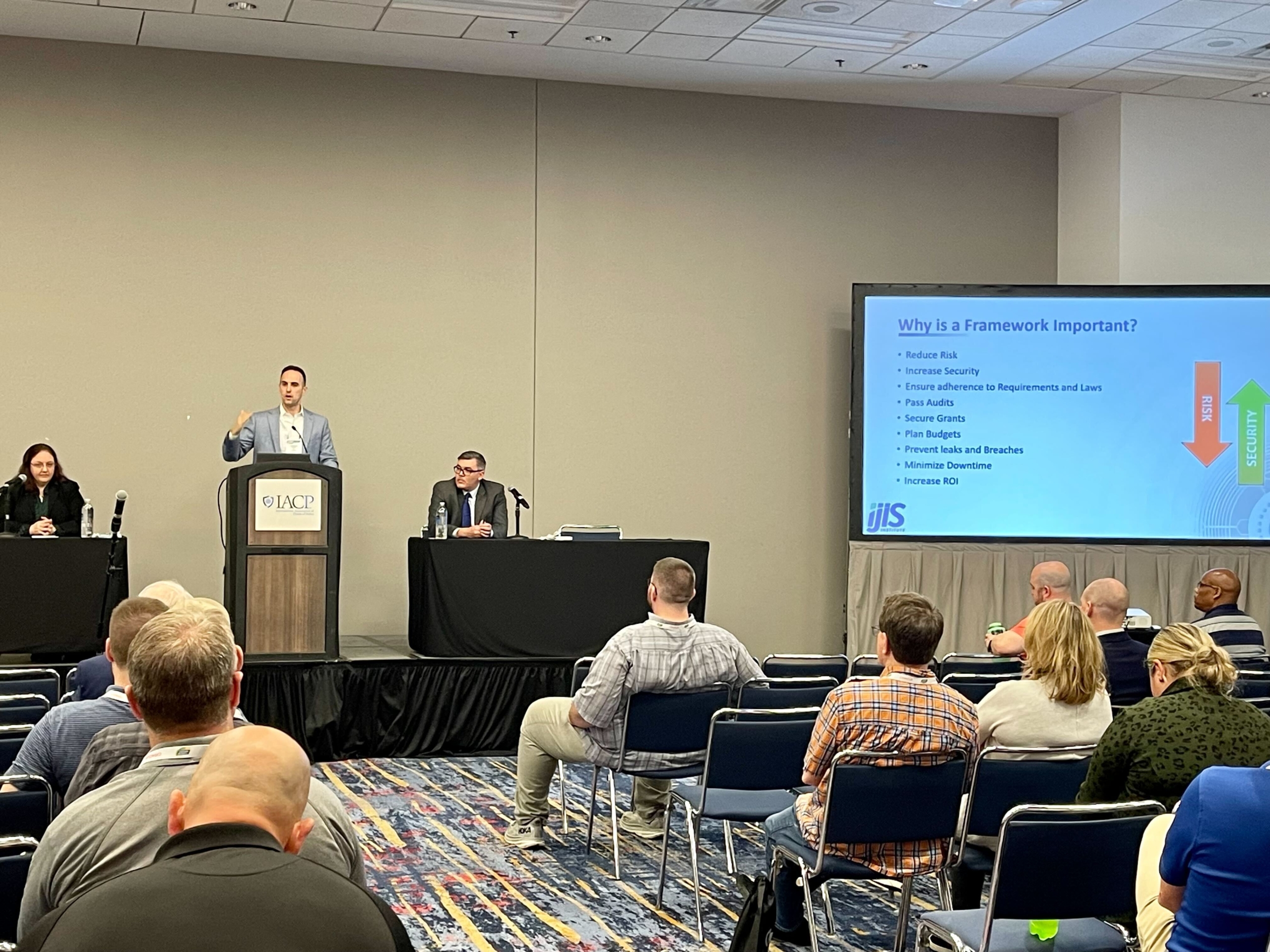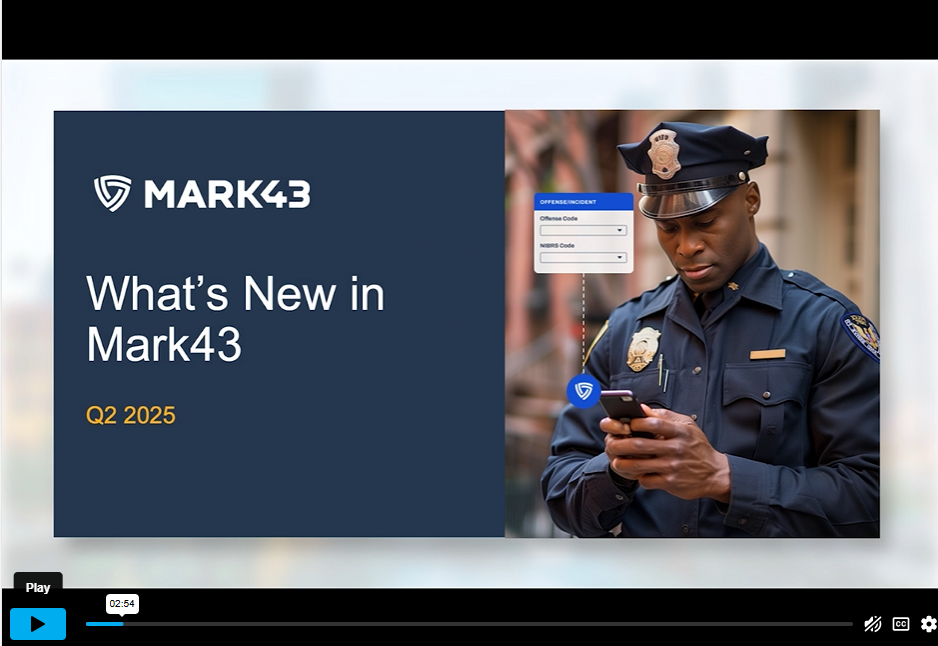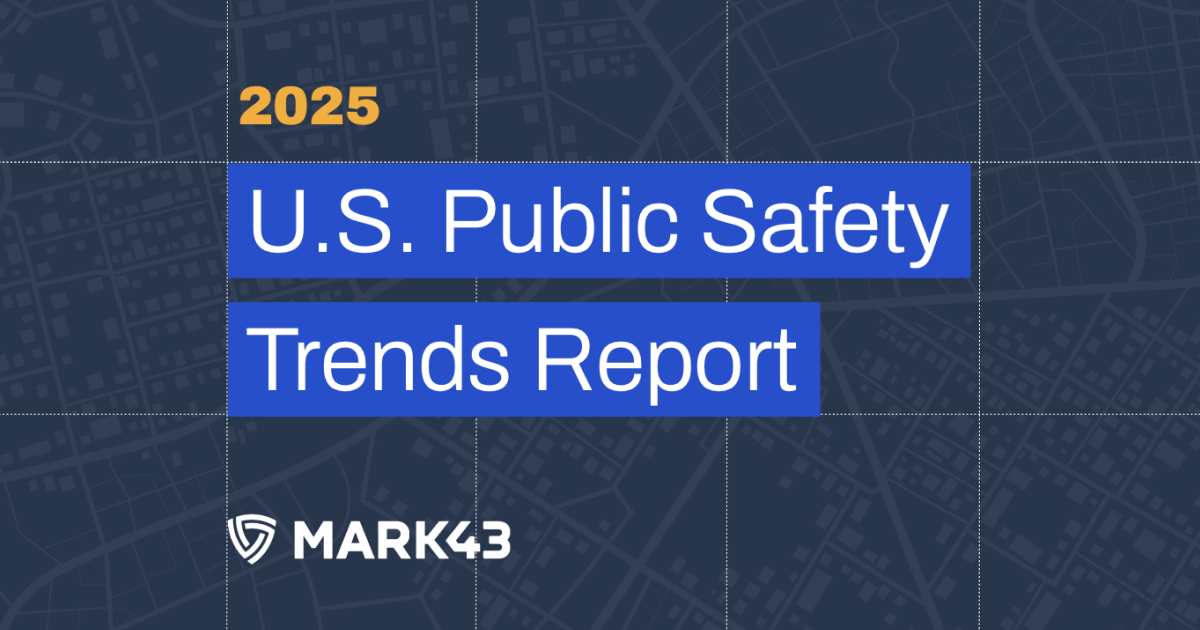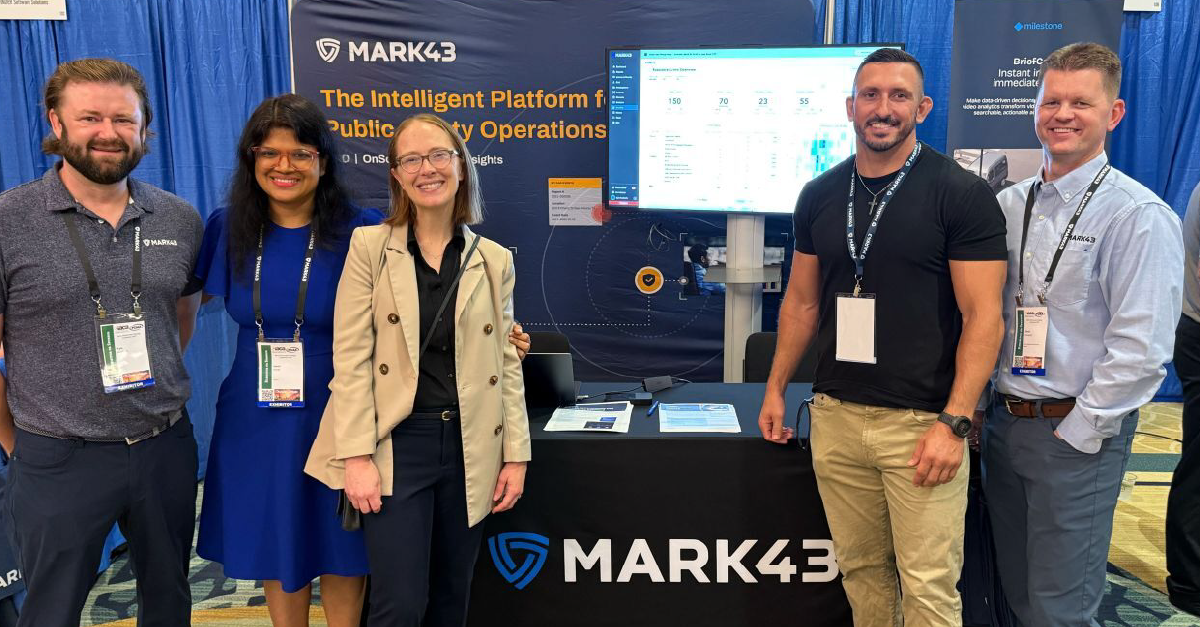
The world of public safety is evolving at a rapid pace, driven by technological advancements that promise to enhance efficiency, safety, and effectiveness in law enforcement. At the forefront of this evolution are three key trends highlighted at the International Association of Chiefs of Police (IACP) Tech Conference: Artificial Intelligence (AI) technology, Cybersecurity, and Real-Time Crime Centers (RTCCs). Each of these trends offers transformative potential, reshaping how law enforcement agencies operate and protect communities. Let’s dive deeper into these top three trends.
Artificial Intelligence (AI) Technology: Revolutionizing Public Safety
Artificial Intelligence (AI) is disrupting how businesses approach workflows and solve problems, and law enforcement is no exception. The application of AI in policing is transforming operations, enabling departments to work smarter, not harder. Here’s a deep dive into how AI is enhancing law enforcement capabilities, particularly through the work done by the Seattle Police Department (SPD) and its innovative use of AI technology.
Leveraging AI for Efficiency and Effectiveness
The pressing need for AI in law enforcement stems from multiple challenges, including staffing shortages and the compliance mandates that increase the amount of data collection and reporting by law enforcement. AI offers a way to bridge these gaps by augmenting human capabilities, allowing officers to handle their duties more efficiently and bring justice to victims more quickly.
Seattle Police Department is a great example of how AI can serve as a force multiplier. With significant staffing challenges—down 400 officers from a full strength of 1,400—the department is turning to AI to maintain service levels. As Captain James Britt explained, despite the staffing shortages and increased crime rates since 2020, the department continues to respond to every call for service. The only viable way to manage this is by integrating technology that can make processes faster and more efficient
Operational Use Cases
One of the standout applications of AI at SPD is the Bias Crime Identifier, which was developed in collaboration with Accenture, and operationalized within their RMS in cooperation with Mark43.. This AI model helps identify potential bias crimes by analyzing police reports and flagging incidents that may contain elements of bias. This task was previously handled by a single detective, who had to manually review thousands of reports. Now, AI streamlines this process, ensuring faster and more accurate identification of bias crimes, thus significantly reducing the workload.
The model works by processing reports submitted through the department’s Mark43 RMS, identifying reports with potential bias elements, and creating tasks for the bias crimes detective to review and follow-up with the victim. This integration means the coordinator can work directly within their existing workflow, without needing to switch between systems. This not only saves time but also ensures that cases are reviewed promptly. The goal is to reduce the time to identify a bias crime from 8-10 weeks to just 72 hours; it’s still too early to say this goal has been met, but early data is positive.

AI: Not Just for the Good Guys
Law Enforcement Agencies are not the only ones leveraging AI to become more efficient; criminals are also adopting this technology to create more complex and sophisticated crimes. This dual-edged sword presents a significant challenge for public safety officials who must stay ahead of these evolving threats. Some examples of these crimes are:
- Counter-Surveillance: Criminals can use AI to monitor police activity and predict enforcement actions. By analyzing patterns in law enforcement behavior, AI can help criminals stay one step ahead, avoiding areas under surveillance or timing their activities to avoid detection.
- Blackmail and Extortion: AI-generated videos and images can be used to create compromising content that doesn’t exist in reality. Criminals can then use this content to blackmail victims, demanding payment in exchange for not releasing the fake material, or even generate disturbing images of loved ones used for ransom.
Responsible Use of AI
While AI offers numerous benefits, its implementation must be handled responsibly. Agencies can ensure this by maintaining a human-in-the-loop approach, where AI assists but does not replace human judgment. This approach helps in maintaining accountability and ensuring that AI’s recommendations are scrutinized by trained officers.
Ethical use of AI is paramount. This includes carefully managing the data sets AI models are trained on and continuously monitoring for biases that could lead to unfair outcomes.
Cybersecurity: Safeguarding Law Enforcement in the Digital Age
As law enforcement agencies increasingly rely on digital tools and data, the importance of robust cybersecurity measures cannot be overstated. Cyber threats pose significant risks to the integrity and functionality of police operations.

Protecting Critical Infrastructure
Cybersecurity is critical to safeguarding the digital infrastructure that supports modern policing. This includes everything from communication systems to data storage and retrieval systems. A cyberattack on these systems can cripple an agency’s ability to respond to emergencies and protect public safety. As highlighted by a cybersecurity expert from Palo Alto Networks, protecting these systems requires a proactive approach, including implementing zero-trust architectures and maintaining up-to-date security measures.
Addressing Ransomware and Data Breaches
One of the most pressing cybersecurity threats is ransomware, where attackers encrypt critical data and demand a ransom for its release. Law enforcement agencies are not immune to such attacks, and the consequences can be dire, including compromised investigations and jeopardized officer safety.
AI technology is being utilized by cybercriminals to automate and enhance the efficiency of their malicious activities. This includes the development of advanced malware, phishing attacks, and ransomware.
- Automated Phishing: AI enables the creation of highly personalized phishing attacks that are more convincing and difficult to detect. By analyzing vast amounts of data from social media and other sources, AI can craft targeted messages that trick individuals into revealing sensitive information.
- Sophisticated Malware: AI-powered malware can adapt and evolve in real-time, making it harder for traditional security measures to detect and neutralize. These programs can learn from their environment, altering their behavior to avoid detection by antivirus software.
It’s essential for agencies to have robust cybersecurity protocols and contingency plans in place to mitigate these risks. This includes regular backups, employee training on phishing attacks, and having a clear incident response strategy.
Real-Time Crime Centers (RTCCs): Enhancing Law Enforcement Operations
Real-Time Crime Centers have become a pivotal tool in modern policing, serving as the nerve centers that collect, analyze, and disseminate information as crimes are in progress. The rise of RTCCs reflects a broader shift towards intelligence-led policing, where data-driven insights empower officers to respond more effectively and efficiently.
Why RTTCs are Gaining Ground
- Easier for Agencies to Stand-Up: RTCCs have been around in some major cities for decades, but only now are more agencies able to invest in one of their own. Agencies in the cloud can prop up an RTCC quickly and no longer need space for large server rooms or maintenance fees associated with managing on-prem servers. This has made it cheaper and more accessible for smaller and mid-sized agencies to acquire an RTCC to facilitate crime fighting.
- Staffing Challenges: Many police departments are facing severe staffing shortages, which strain their ability to respond to incidents effectively. For instance, Minneapolis Police Chief Brian O’Hara says his department is short by more than 200 officers and has lost 40% of its police force in the last four years. RTCCs act as force multipliers, allowing agencies to leverage technology to bridge these gaps. By providing real-time information and support, RTCCs enable officers to make more informed decisions quickly, thereby compensating for the reduced manpower.
- Increasing Efficiency While Minimizing Disruption: Society’s expectations of law enforcement are continually rising. Agencies are expected to respond quickly and efficiently to incidents while minimizing disruptions to the community. RTCCs support rising public expectations by enabling precision policing—providing officers with the real time information to make decisions that protect responding officers and increase the chance of catching the suspect. This allows law enforcement to target specific threats without impacting the broader community.
- Enhancing Situational Awareness: RTCCs are designed to provide law enforcement officers with real-time situational awareness. By integrating data from various sources, including surveillance cameras, license plate readers, and social media, RTCCs offer a comprehensive view of ongoing incidents. This capability was vividly illustrated by Captain Darin Hull from the Cobb County Police Department, who emphasized the importance of precision policing. “We want the best information possible to make the best decisions possible,” Holman stated, highlighting how RTCCs enable officers to act with greater accuracy and timeliness.
- Force Multiplication in Times of Scarcity: In an era where many agencies face staffing shortages, RTCCs act as force multipliers. They allow a smaller number of officers to cover more ground by leveraging technology to monitor and respond to incidents. This is particularly crucial in large jurisdictions where physical presence alone is insufficient. As Assistant Chief Jose “Manny“ Gomez from the Winston-Salem Police Department noted, providing officers with detailed, real-time information as they respond to scenes can significantly enhance their effectiveness and safety.
Looking to the Future
The integration of Real-Time Crime Centers, Artificial Intelligence, and robust Cybersecurity measures represents a transformative shift in law enforcement. These technologies not only enhance the capabilities of public safety agencies but also ensure a higher level of safety and efficiency in protecting communities.
As these trends continue to evolve, they will undoubtedly shape the future of policing, making it more responsive, data-driven, and resilient against the ever-changing landscape of threats. By staying ahead of these technological advancements, law enforcement agencies can better serve and protect the public, ensuring a safer and more secure society for all.
Want to learn more about how your agency can become more efficient with the most secure cloud-native public safety platform? Book your demo today.







